STUDENTS PROJECTS
PROJECTS2013
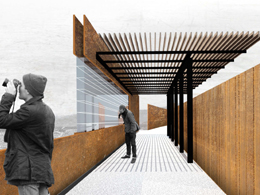
17 March, 2014
Railscapes: Tracing routes of rail history
The intervention examines the reactivation of the railway network of the Peloponnese, suspended since 2011, through the reinterpretation of railways as a channel of mobile cultural and recreational incubators.
Students : Angelica Yannoulatou, Maritina Koutsoukou, Mikela De Tchaves
Supervisor : Bouki Babalou, Costas Caradimas
School of Architectural Engineering of the National Technical University of Athens
Date : July 2013
Focusing on the journey Muloi Argolidas - Achladokampos Bridge, the visitor enjoys the experience of travelling by train as a trace of rail history through the unique landscape of the Peloponnese.
The project is inspired by the natural and cultural richness of the Peloponnese, and how it unfolds along its railway network. We propose a way to reclaim this network, which has been suspended since 2011, in order to communicate to the visitor the experience of travelling by train in the Peloponnese, while creating a museum that preserves its history so far. The proposal consists of a route with a starting point and a journey by train to a point of great importance for the history of the network, where the main part of the intervention is located.
The journey starts from the railway station of Mili, in Argolida, where the buildings, constructed from 1887 - 1910, still give a vivid impression of the typical atmosphere of their era. After seeing the introductory part of the exhibition, the visitor embarks on a thirty-minute journey with the museum train, crossing four areas of different landscape qualities from the coastal station of Mili to the railway bridge of Achladokampos, the largest of the network, situated at an altitude of 394m.
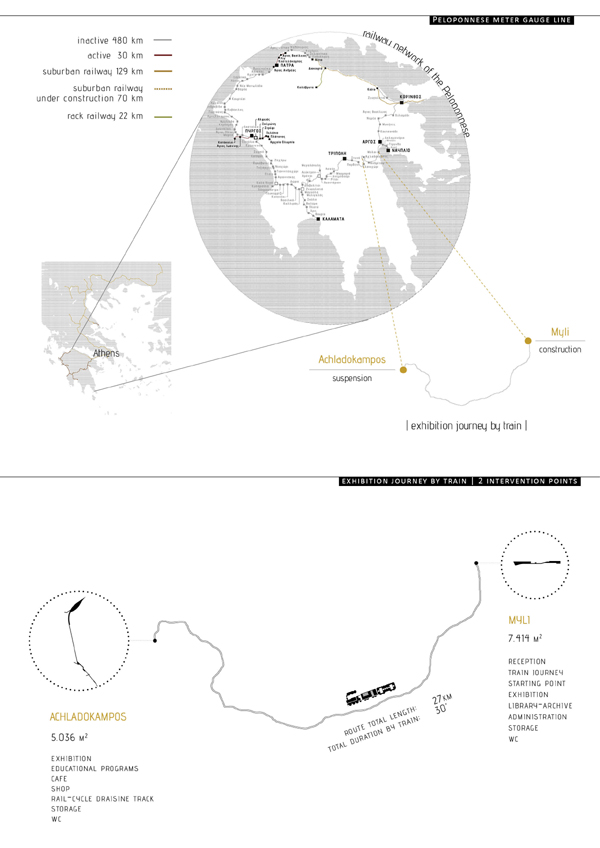
The railroad of the Peloponnese, due to its circular development and its particular gauge, which differs from the one that crosses the rest of Greece (Peloponnese gauge: 1.00 m, international-standard gauge: 1.435 m), is the only railway in the country which can actually be perceived as a network. The largest part of the network, just upgraded in 2010, remains suspended today without being maintained, but still preserving the unique original atmosphere of the network.
A route on this suspended part is where we choose to place our intervention. Starting from the village of Myli, in Argolida, near the settlement of ancient Lerna, and up to the historic bridge of Achladokampos we propose a journey-museum that gives the opportunity both to residents of the surrounding areas and others to discover this region through a different medium and also guarantees the value of the network as a monument of industrial heritage.
The particular topography of the Peloponnese imposes low running speeds, thus the network cannot become competitive as a means of regular public transportation. Our proposal exploits the particular characteristics of the network, turns them into advantages and creates a more wandering, excursive and nature-related character (low speed, open windows). It is a route which represents all that we have associated with the Peloponnesian railway: culture and nature . This selected route acts as a first opportunity to reinvigorate the network, which then could take other forms or expressions in using this infrastructure towards the connection of the centers of the area.
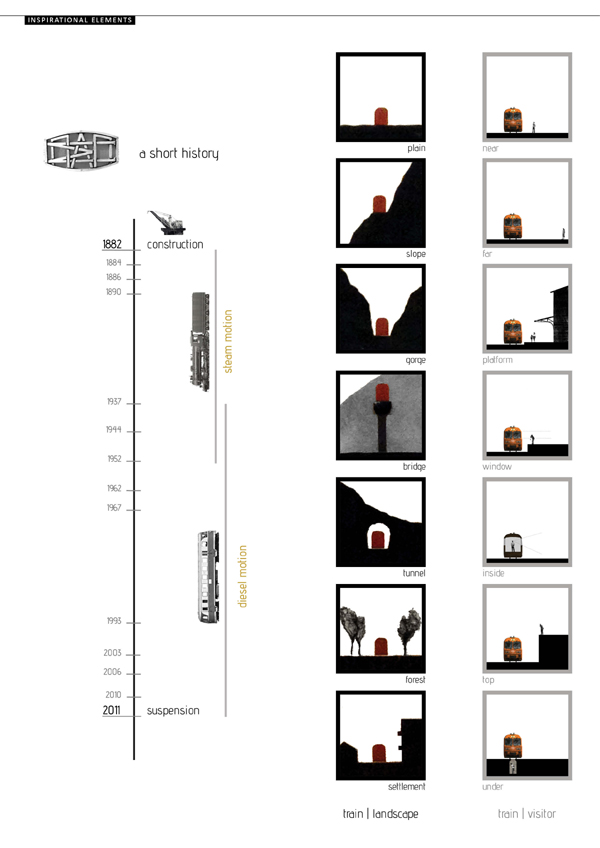
The train ride and the walk through the open-air exhibition aim to convey to the visitor the most important moments of the history of the network from the beginning of its construction in 1882 to its suspension in 2011 , by organising the exhibits into 4 main sections: Construction ( station of Myli ) , Steam Motion, Diesel Motion ( the two main sections of the exhibition on both sides of the bridge ) , Suspension ( final point of the visitor's course). The tracings on the landscape and the formation of the exhibition establish new relations between the visitor and the trains-exhibits as well as with his surroundings, drawing elements from the relations of a train in motion with its surrounding landscape.
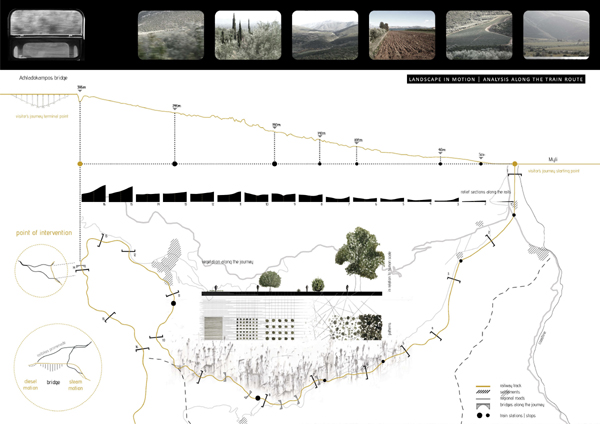
While traveling by train, the passenger acquires a new relation with the landscape he passes through. Due to the movement of the train, the small passenger window becomes a single continuous opening, which frames the landscape in motion. Even the still landscape seems to get in motion thanks to the dynamism of visual forces. The identification of these lines, which transform the motionless landscape into a dynamic setting is a design inspiration which aims to set the static areas of the museum into motion. Through a reading of the landscape along the journey Myli- Achladokampos, the relief sections, the vegetation and the visual forces, four distinct landscape clusters are identified which form 4 micro-ambiances along the route.
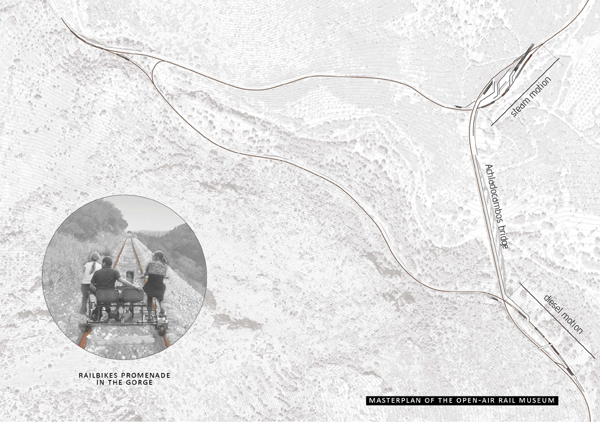
The exhibition at Achladocampos bridge unfolds on both sides of the bridge and the visitor conducts a circular route. After crossing both exhibition sections (Steam Motion-Diesel Motion) and the bridge, he returns at the starting point on foot or after a 20-minute railbike tour through the gorge of Syrtis. Moving in a distinct pace this time, he has direct contact with the surrounding nature. Along the way he comes across old abandoned railcars and as he moves towards the platform of the museum train the imposing view of the tableland unfolds behind the bridge.
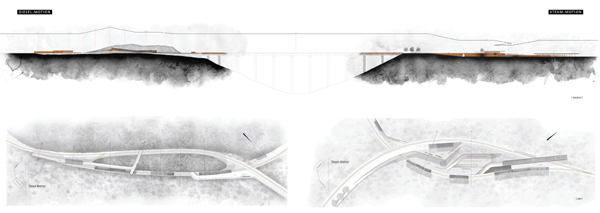
After disembarking from the train museum to the platform, the visitor goes through the exhibition section of the "Steam Motion" and then, after crossing the bridge parallel to the train tracks, arrives at the section of "Diesel Motion". Throughout the exhibition, the visitor experiences various situations and relations with the exhibits and the surrounding landscape. At the very end, he reaches a breaking point that symbolizes the suspension of the network and its uncertain current state. His own path is interrupted by a big glass through which the railway line continues and disappears behind the next curve. This point is also the end of the exhibition, which as a whole forms a continuous ascending route, similar to the train route from Myli (sea level) to Achladokampos bridge (394m).
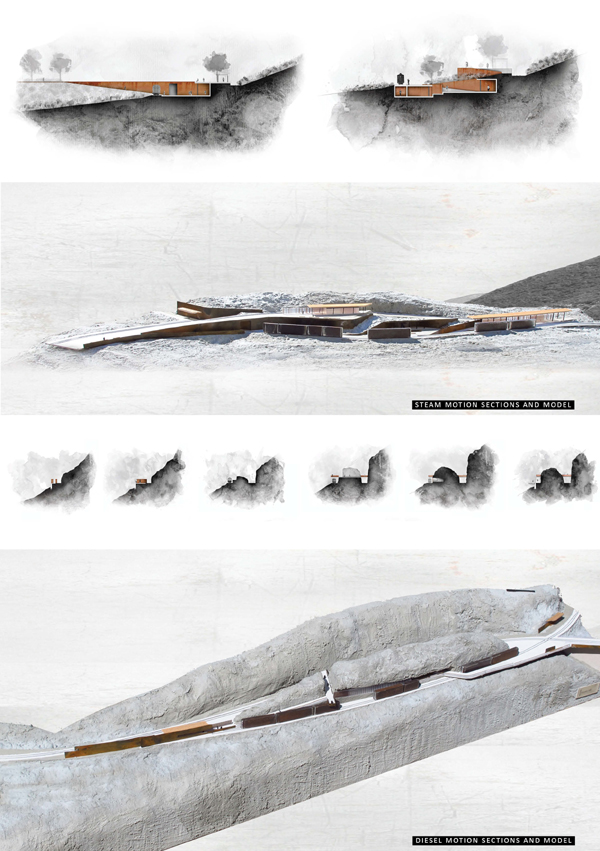
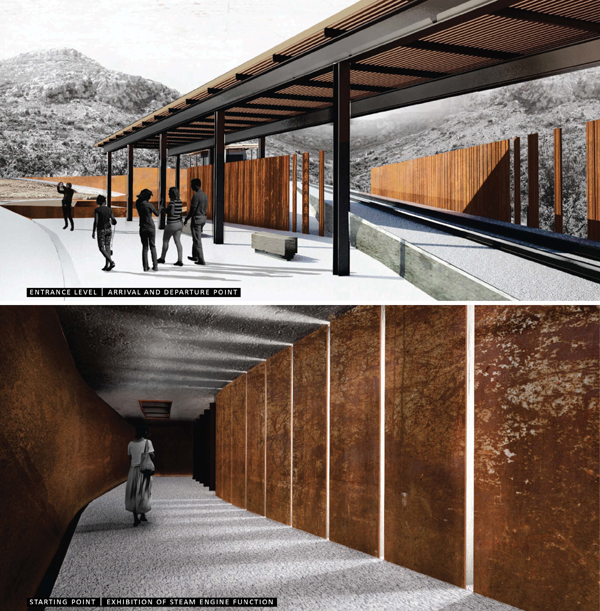
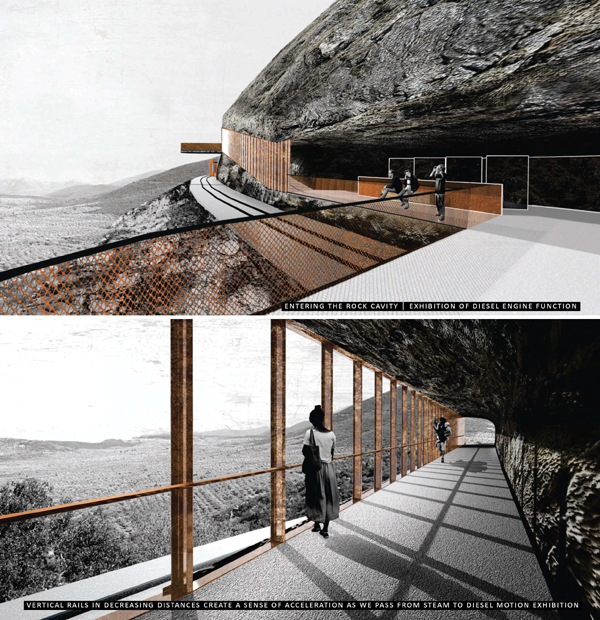
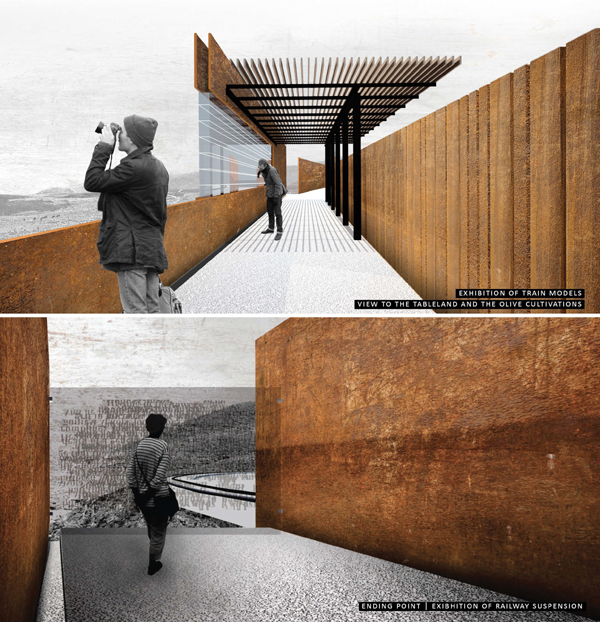
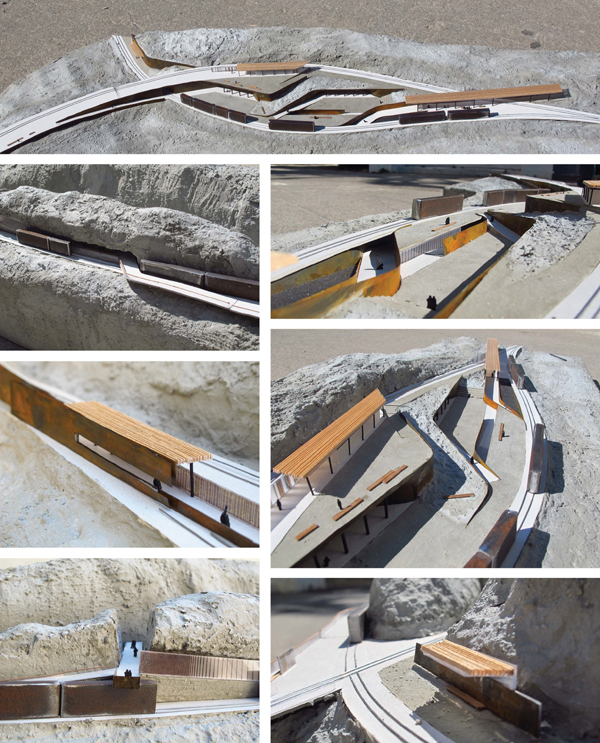
Related articles:
- Urban reconstruction using the train ( 11 March, 2011 )
- Central bus station in the area of Eleonas - Botanikos ( 26 April, 2011 )
- Metro station “KERAMIKOS” ( 29 June, 2012 )
- Gullesfjord Weight Control Station ( 23 October, 2012 )
- Suburban Railway Station. Urban regeneration in Rouf, Athens, Greece ( 21 January, 2013 )
- Interventions on the urban railway stations of the network Patras - Rio ( 13 February, 2013 )
- In.Bu.S, Intercity Bus Station in Chania, Crete ( 02 April, 2013 )
- Railway Station Complex in St. Denis district in Patras, Greece ( 11 April, 2013 )
- Souda Port Passenger Station, Souda Bay,Chania,Crete ( 10 June, 2013 )










